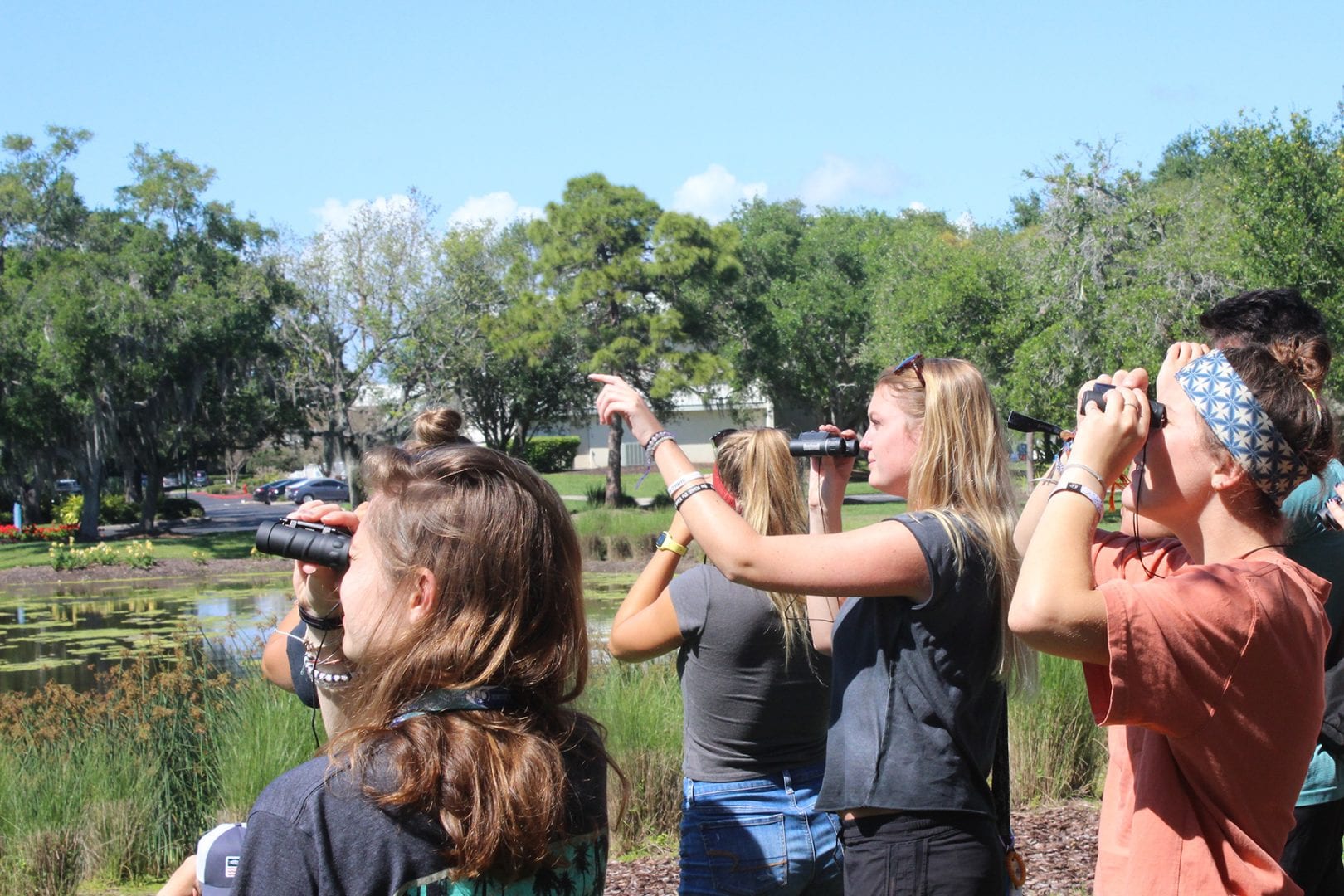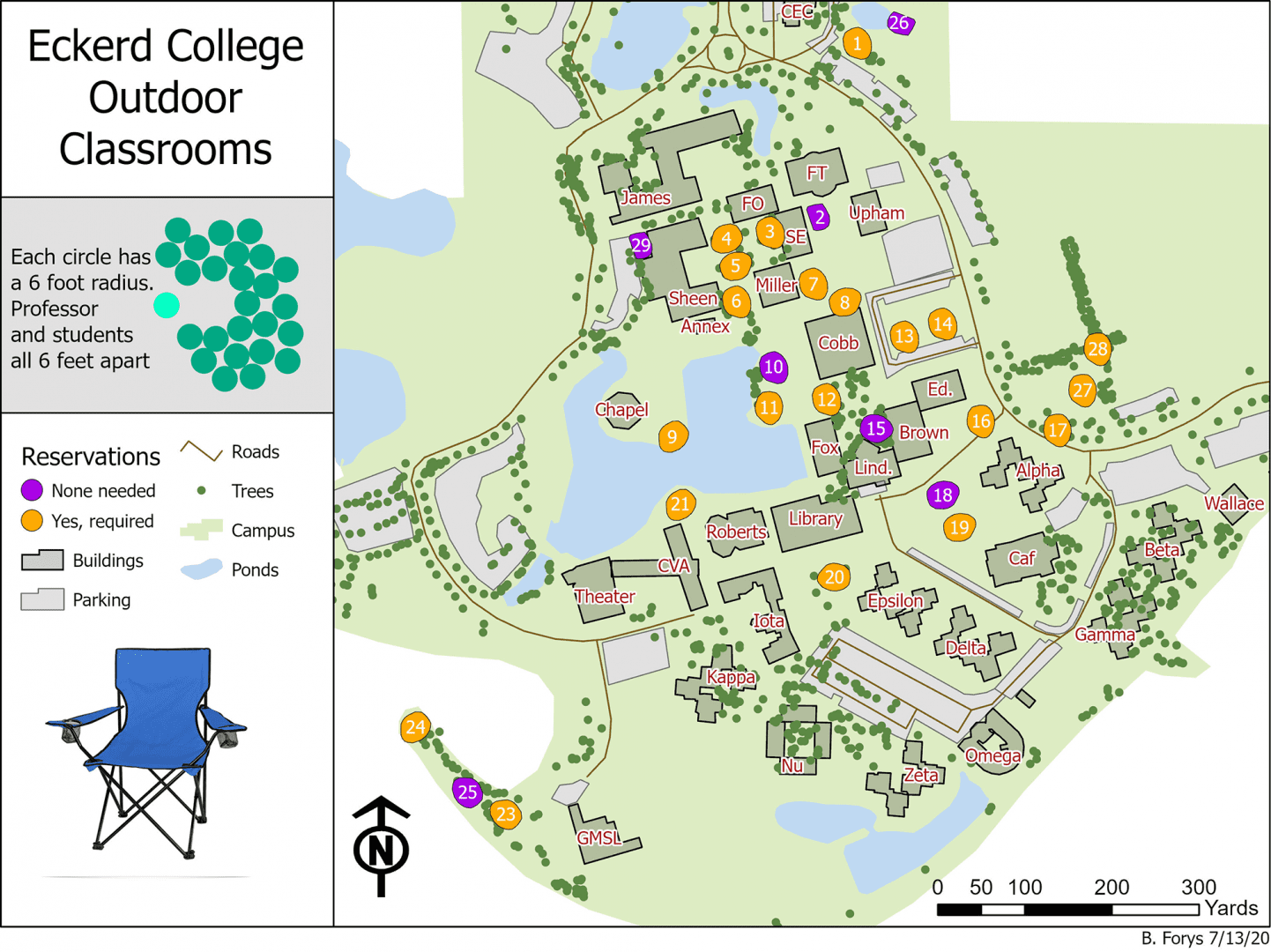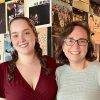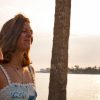
Elizabeth Forys, Ph.D., the Richard R. Hallin Professor in Natural Sciences at Eckerd College, taught a lab class outside for 12 years.
Her environmental biology lab students got accustomed to bringing camping chairs to shaded areas of the 188-acre campus to hear her lecture about the natural world while sitting in its midst.
“When we closed campus in March for the pandemic, I thought, ‘I’m going to teach outside when we return’ because outdoor transmission is much lower than indoor transmission,” she said.

Spring 2018: Claire Varnum ’21 (center) and classmates descry an osprey during an Environmental Biology lab with Professor Forys.
To make sure every professor has that option, Forys and Assistant Professor of Environmental Studies Noëlle Boucquey were tasked by administrators with completing a full inventory of suitable outdoor academic spaces on-campus and creating a reservation system. Forys used her background in geographic information system mapping, and Boucquey used her environmental science background to document shade and wind conditions for each location.
The duo identified 51 sites, including 27 with natural or manmade shade structures and 24 sites that can accommodate a class of 20 or more students. All but four of the areas have moderate to good Wi-Fi, and the Information Technology staff is working to improve the signal in those areas.
Boucquey surveyed faculty beginning July 9 to determine the demand for outdoor options. Of the nearly 100 responders, more than 83% were interested, particularly those with larger classes. More than a quarter of instructors surveyed said they would teach outside for every class every day.
All faculty members will have access to the map of locations before classes begin and will be able to reserve one of 27 outdoor spaces (based on availability) for their class meeting time for the duration of the course, Boucquey explained. “I think there are enough spaces to accommodate every simultaneously scheduled course on campus,” she said.
Not included in the inventory for all faculty are marine science labs being created below the stilted Galbraith Marine Science Laboratory building, said Forys.
Most of Galbraith Marine Science Laboratory is raised off the ground; additional labs are being organized on ground level.
“One of the advantages we have on our side in Florida is the weather,” Boucquey said. “We can have classes outside and no one is freezing as they would in northern states.”
Forys has taught Field Ornithology outside in January for 24 years. “My students come from places where it is much colder. I’ll have on my jacket and they’ll still be in flip-flops,” she laughed.
Florida’s intermittent rains during the early fall could force some class sections indoors or into remote delivery, but National Weather Service rainfall averages indicate even those interruptions will be brief. Eight of the outdoor classroom sites are equipped to be used even in rain, Forys explained, and more temporary structures are planned.
This response to educating during a pandemic has precedent in history. A recent New York Times article recommended returning to the open-air school model that proliferated during the tuberculosis outbreaks of the early 20th century. Shorecrest, a private school in St. Petersburg, was founded as an open-air school in the 1920s.
Faculty in all disciplines have utilized Eckerd’s outdoor spaces for classes for decades, contributing to the College’s well-known motto: Think Outside.
Teaching all her courses outside in the Fall Semester will simply be a return to form for Forys, who has been at Eckerd since 1996.
“Surprisingly, I’ve only heard of a few other colleges and universities that are doing outside teaching,” Forys said. “There is such a huge advantage to being on the coast in Florida, while September might be warm, we will have a good breeze and during the rest of the semester it will be lovely.”













